Science Daily News | 03 Jul 2023

Views (139)
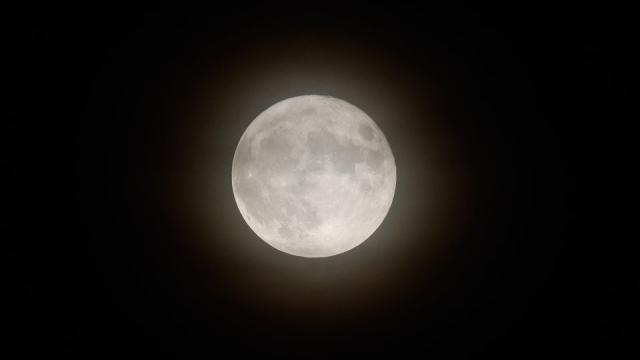
What's next for Europe's Euclid 'dark universe' telescope after stunning SpaceX launch?
The European-led Euclid mission soared into space on July 1 on a journey to understand the dark universe. Getting the ambitious project set for observing will take months.
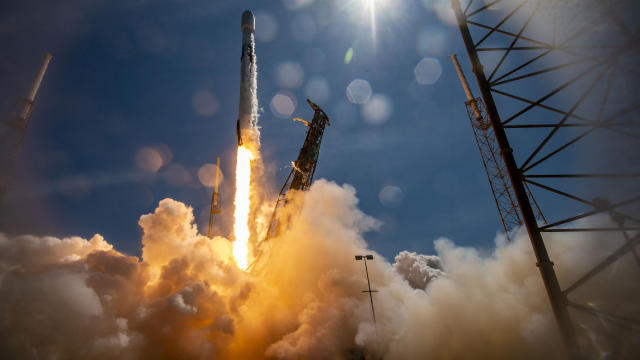
CAPE CANAVERAL, Fla. — A new space observatory is flying across the void after a dramatic launch atop a SpaceX rocket Saturday (July 1), but its journey has just begun.
"It was really a fantastic launch — from the insertion of the spacecraft into orbit separation," he noted. But he said researchers are anxious to the point "where the various instruments are being switched on. This takes a couple of weeks."
An artist's illustration of Euclid operating in space. (Image credit: Work performed by ATG under contract for ESA, CC BY-SA)
Now that Euclid is in space and sending signals home, its first task is to put itself on the right trajectory for L2. That will happen roughly two days after launch, and its path will be verified along the way to make sure it is heading in the right direction.
The first month of Euclid's space journey will see it fly to L2, naturally cooling down to space temperatures, while all instruments and systems will be checked out for space. Then months 2 and 3 will see engineers assess the performance of Euclid against what we'd expect on the ground (which will include, perhaps, the release of some calibration images — although mission representatives are tight-lipped about the timing.)
"After this total of three months, then we should be ready to start science observations, but we still have to make some particular calibration even then," Racca said. Euclid will probably be fully ready in about eight months, assuming nothing goes awry during the testing.
Racca said team members will especially be anxious for image quality, which can be affected by things such as humidity — an irony considering Euclid launched from Florida during a typical damp July day. "Only a few nanometers of water ice into our optics affects our image quality," he said.
RELATED STORIES:
There fortunately is a backup plan if Euclid has a bit of stray moisture, but mission project scientist René Laureijs told Space.com it will be tricky.
"If we do have contamination, we have to heat up the satellite to cool it down again to get the moisture away," he said. "In principle, we can just do it. But it will shot a hole in our schedule."
Euclid needs to get moving quickly to map 15,000 square degrees (a third of the sky), so the team will be watching anxiously to make sure it's ready to go. If the moisture does need to be removed, Laureijs said it will be "difficult to do in order to finish the survey on time," but there is still room for it.
Elizabeth Howell's trip to Florida was co-sponsored by Canadian Geographic magazine and Canada's University of Waterloo, where Euclid's primary science coordinator (Will Percival) is based. Space.com has independent control of news coverage.
Euclid: Professor’s joy at ‘mind-blowing’ satellite launch
Euclid has blasted off on a million-mile journey to uncover the mysteries of the dark universe.

A professor behind a new satellite has described watching it blast off on a million-mile journey as "mind-blowing".
Euclid, the brainchild of Hampshire professor Adam Amara, launched from Cape Canaveral in Florida on Saturday.
Prof Amara said: "It was so glorious to see it go up. Imagine a world cup when a big goal happens in the final - it was that... but for nerds".
It should take a month to reach its destination where it will capture images for a 3D map of the cosmos.
"It was my first launch in person," he said. "For that to be a mission I have been so heavily involved in, it's mind-blowing.
"Imagine 18 birthdays and 18 Christmases landing, not just one day, in a few seconds. It was totally surreal."
Reflecting on the successful take-off, he said: "All of the steps happened exactly as they were supposed to.
"This marks the start of a long journey - I feel like Euclid's grown up and Euclid's off into the world making its mark."
Once it reaches its destination - an area in space known as the second Lagrange point, where the gravitational forces of Earth and the sun are roughly equal - it will run a series of tests.
The professor, who is the director of the Institute of Cosmology and Gravitation at the University of Portsmouth, said: "Then discoveries will start rolling in for the next 10 years.
"Eighteen years ago it was an idea... it was like, 'hey wouldn't it be cool if we made something that could take pictures of the whole sky'?
"Then 2,500 people later, 18 years of hard work and engineering and almost 1.5bn Euros later, it's on its way," Prof Amara said.
The aim of the mission is to shed light on two of the universe's greatest mysteries: dark energy and dark matter.
According to the ESA, which is funding the project, the high quality images will help astronomers gain insights into the elusive dark matter - particles that do not absorb, reflect or emit light.
Experiments indicate the cosmic contents include:
Roughly 5% normal matter - atoms, the stuff from which we are all made
About 27% dark matter - so far unseen directly and defying description
About 68% dark energy - the mysterious component accelerating cosmic expansion
The universe is calculated to be 13.8 billion years old.
How AI can help process waste and increase recycling
Video cameras powered by AI are analysing work at waste processing and recycling facilities.
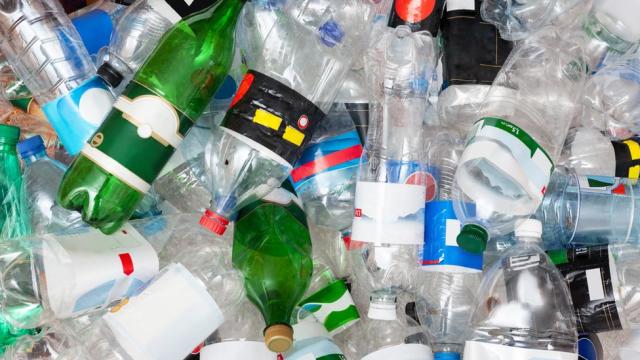
There is a lot of rubbish in the world.
Someone who will not find those statistics surprising is Mikela Druckman. She has spent a lot of time looking at what we throw away, as the founder of Greyparrot, a UK start-up that has created an AI system designed to analyse waste processing and recycling facilities.
"In a single day you will have literally mountains of waste in one facility coming through, and what's very shocking and surprising is that it never stops," she says. There are no holidays for waste, it just keeps coming."
Greyparrot places cameras above the conveyor belts of around 50 waste and recycling sites in Europe, utilising AI software to analyse what passes through in real-time.
AI technology has come on in leaps and bounds over the past year, and its ability to process images is now very sophisticated. However, Ms Druckman says it was still hard to train a system to recognise rubbish.
"A product like a Coke bottle, once it goes into the bin, will be crumpled, crushed and dirty, and makes the problem much more complex from an AI standpoint."
Greyparrot's systems now track 32 billion waste objects per year, and the firm has built up a huge digital map of waste. This information can be used by waste managers to become more operationally efficient, but it can also be shared more widely.
"It is allowing regulators to have a much better understanding of what's happening with the material, what materials are problematic, and it is also influencing packaging design," says Ms Druckman.
"We talk about climate change and waste management as separate things, but actually they are interlinked because most of the reasons why we are using resources is because we're not actually recovering them.
"If we had stricter rules that change the way we consume, and how we design packaging, that has a very big impact on the value chain and how we are using resource."
She hopes that big brands and other producers will start using data generated by firms like GreyParrot, and ultimately design more reusable products.
Troy Swope runs a company that is intent on making better packaging. Footprint has worked with supermarkets, and with Gillette to convert its plastic razor trays to ones made of plant-based fibre.
He referenced a plastic salad container that was labelled "ready to recycle" and asked what that actually meant.
"It's less likely than ever that their discarded single-use plastic ends up anywhere but a landfill," wrote Mr Swope. "The only way out of the plastics crisis is to stop depending on it in the first place."
So-called greenwashing is a big problem, says Ms Druckman. "We've seen a lot of claims about eco or green packaging, but sometimes they are not backed up with real fact, and can be very confusing for the consumer."
To help retailers know that used plastic bottles are in fact being recycled, and in what numbers, UK-firm Polytag covers them with an ultraviolent (UV) tag that is not visible to the human eye.
When the bottles then arrive at the determined recycling plants, the tags are read by a Polytag machine. The number of bottles is then uploaded to a cloud-based app in real time, which Polytag's customers can access.
"They can see exactly how many bottles are being recycled, which is something these brands never had access to before," says Polytag's project manager Rosa Knox-Bradley.
So far the firm has worked with UK retailers Co-Op and Ocado.
This is due to see "reverse vending machines" located in shops and other public areas, where people will be able to deposit used plastic bottles and metal drinks cans, and be paid money for doing so - around 20p per item.
The search to find a planet-friendly way to get rid of rubbish remains a tough race, however, as seemingly every year a new trend comes along to throw a spanner in the works.
The latest is an addiction to e-cigarettes, or vapes, which are creating a whole new mountain of electronic waste that is hard to recycle.
"It's a huge problem. And it's getting bigger," said Ray Parmenter, head of policy and technical at the Chartered Institute of Waste Management.
He adds that the "fundamental issue" is disposable single-use vapes, which he says "are basically an anathema to the circular economy".
Disposal vapes are composed of many materials - plastics, metals, a lithium battery and some even have LED lights or microprocessors.
"The way we get these critical raw materials like lithium is from deep mines - not the easiest places to get to. So once we've got it out, we need to make the most of it," says Mr Parmenter.
Vapes are a good example of how we need to change thinking, says Ms Druckman.
"It doesn't make economic sense, it doesn't make any sense. Rather than ask how do we recycle them, ask why we have single-use vapes in the first place?"
While industry and policy-makers have big roles to play in making products more recyclable or reusable, so do consumers, she adds. And the biggest change they can make is to "consume less".
See Europe's powerful new Ariane 6 rocket on launch pad (photos)
The European Space Agency shared a new view of the Ariane 6 rocket on its launch pad ahead of engine tests.
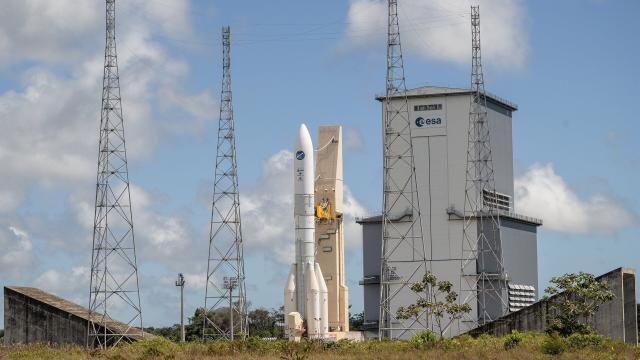
The European Space Agency (ESA) shared a new view of the Ariane 6 rocket on its launch pad ahead of engine tests this month.
Image 1 of 3
Image 2 of 3
Image 3 of 3
"The operation, which takes about half an hour, was a trial run in preparation for a series test firings of the Vulcain 2.1 engine," ESA officials said in the statement. "These test firings will be conducted on the launch pad as part of ongoing preparations for the first-ever flight of Ariane 6."
The Ariane 6 rocket in the recent photos from ESA is being used solely to test assembly procedures, electrical and fuel connections and telemetry, and is not intended for flight. The procedure of removing the mobile gantry and returning it for the first time helps validate the rocket’s ground infrastructure.
Related Stories
The debut flight of Ariane 6 was originally planned for 2020 but has slipped several times since. The latest target for launch is the second quarter of 2024, at the earliest. The rocket features a reignitable upper stage called Vinci that can deliver satellites to various orbits and altitudes. It is designed to deorbit autonomously and burn up in Earth's atmosphere.
Northern Ireland scientist's role in black hole shock-waves find
"Nasa-mad" Lisburn man Dr Stephen Taylor chairs a team studying how gravitational waves affect pulsars.
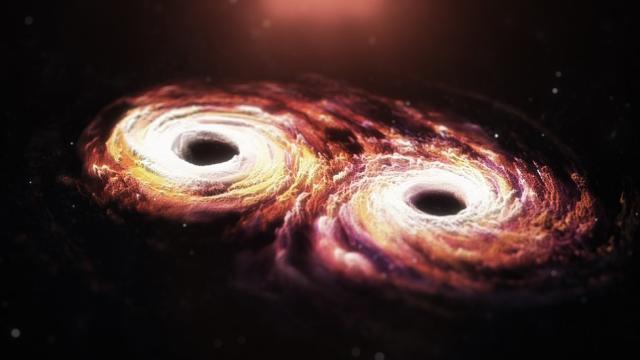
One of the groups that made the discovery is the North American Nanohertz Observatory for Gravitational Waves (NANOgrav) Collaboration, which is chaired by Northern Ireland native Dr Stephen Taylor.
The 35-year-old credits his love of all things space-related with seeing a partial solar eclipse during the summer of 1999, which also happened to coincide with the 30th anniversary of the first moon landing.
"The combination of those things and us learning about it at school - it just really sparked my imagination," Dr Taylor said.
He continued his education at Wallace High School in his home town of Lisburn and his passion for science, he says, never left him.
"I was always fascinated by it and that really played a big role in what subjects I chose for GCSE and A-level," he said.
While studying for his A-level's, Dr Taylor went for work experience at a laser laboratory in Oxford.
It is there that he had a chance encounter with another Northern Ireland scientist whose work played a large role in his later research.
While at Oxford, he had the opportunity to attend a talk by Dame Jocelyn Bell-Burnell who discovered pulsars while a grad student at Cambridge.
Pulsars are dead stars which rotate and send out bursts of radio signals at extremely precise intervals.
"She gave a fantastic talk and I went up afterwards spouting the popular science I had read, thinking I knew everything," he said.
"But she was just really nice and kind of humoured me, if I am honest."
Pulsars would then be measured by Dr Taylor and his team in this latest paper.
"I think it's really nice that Northern Irish people are on both ends of this - because I certainly didn't hear accents like mine giving these kind of science interviews or talks," he said.
Dr Taylor then went on to do his undergraduate degree at Oxford, followed by a PhD at Cambridge looking at gravitational waves.
"At the time the idea was still theoretical. There were mainstream projects such as Ligo" - the US-based Laser Interferometer Gravitational-Wave Observatory - "but people were more focused on other aspects of physics.
"But my philosophy was, if I am going to do this I am going to enjoy it and this was what fascinated me most."
The first in his family to go to university, Dr Taylor said his parents always encouraged him to make choices that made him happy.
From there, the "Nasa-mad" Dr Taylor had the opportunity to work at the space agency's jet propulsion laboratory before spending some time at the California Institute of Technology.
This led him to begin taking up leadership roles, chairing a working group looking at gravitational waves and getting a permanent position at Vanderbilt University in Nashville, Tennessee.
His team have been studying the signals which are omitted by pulsars and the affects of gravitational waves on their frequencies.
Dr Taylor described the radio beams from pulsars as being like light beams from a lighthouse. When the frequency at which they hit Earth changes, this shows gravitational waves as predicted by Einstein.
He said the most plausible cause of these waves is the orbit of supermassive black holes.
"We've seen loads of hints along the way but this is the first evidence in this kind of data set which is really exciting."
Dr Taylor said that, due to the frequencies, these black holes would be billions of times as massive as the sun and sit at the centres of galaxies.
"I never thought I would be involved in something like this. It was fun to be part of the physics and maths problems but I never thought it would get to this point," he said.
Dr Taylor said that the support of family, friends and his schools played a vital role.
"They never put up road blocks. I mean, if someone said they wanted to be a theoretical astrophysicist and try to make a big discovery, many would say, 'Catch yourself on'.
"But no-one ever really said that."
But it is not all plain sailing for people in Dr Taylor's field.
"It is not like in the movies, with a load of scientists around a computer saying, 'We got it; we're in'. There is no eureka moment.
"In this line of work it is a lot more about the small successes. The big breakthrough moments rarely happen and are often a long time coming."
Dr Taylor is looking forward to collaborating with similar projects around the world, combining their readings in order to learn more about these black holes and their gravitational affects.
July’s supermoon will be 14,000 miles closer to Earth than a typical full moon event
The buck moon will rise on Monday, July 3. It will be the first supermoon of the year, appearing brighter and slightly bigger than any other full moon in 2023 so far.

The full moon will rise on Monday, July 3, and reach peak illumination below the horizon at 7:39 a.m. ET, according to The Old Farmer’s Almanac. Local weather conditions allowing, you can view the celestial event by looking to the southeast after the sun sets.
“A supermoon is when the moon appears a little bit bigger in our sky,” said Dr. Shannon Schmoll, director of the Abrams Planetarium at Michigan State University. “As the moon goes around the Earth, it’s not a perfect circle. So, there are points in its orbit where it’s a little bit closer or a little bit farther from the Earth.”
This month’s moon is also known as the buck moon. July is typically when male deer’s antlers grow during an annual cycle of shedding and regrowth, according to the almanac.
While most years have 12 full moons, 2023 will have 13 of these lunar events. There will be two supermoons in August, including a blue moon, which will be the closest moon to Earth this year, according to The Old Farmer’s Almanac. The fourth and final supermoon in 2023 will rise on September 29.
● August 1: Sturgeon moon
● August 30: Blue moon
● September 29: Harvest moon
● October 28: Hunter’s moon
● November 27: Beaver moon
● December 26: Cold moon
To avoid damage to the eyes, viewers should wear eclipse glasses.
A partial lunar eclipse will also take place on October 28. Only part of the moon will pass into shadow as the sun, Earth and moon will not completely align. This partial eclipse will be viewable in Europe, Asia, Australia, parts of North America and much of South Africa.
● Southern Delta Aquariids: July 30-31
● Alpha Capricornids: July 30-31
● Perseids: August 12-13
● Orionids: October 20-21
● Southern Taurids: November 4-5
● Northern Taurids: November 11-12
● Leonids: November 17-18
● Ursids: December 21-22
0 Likes
